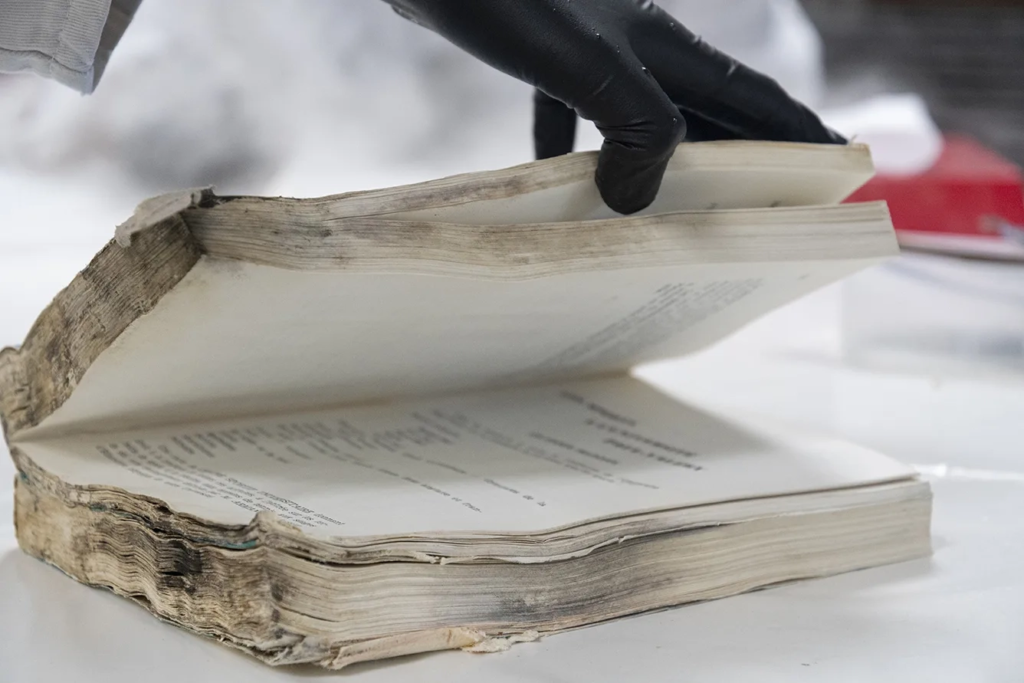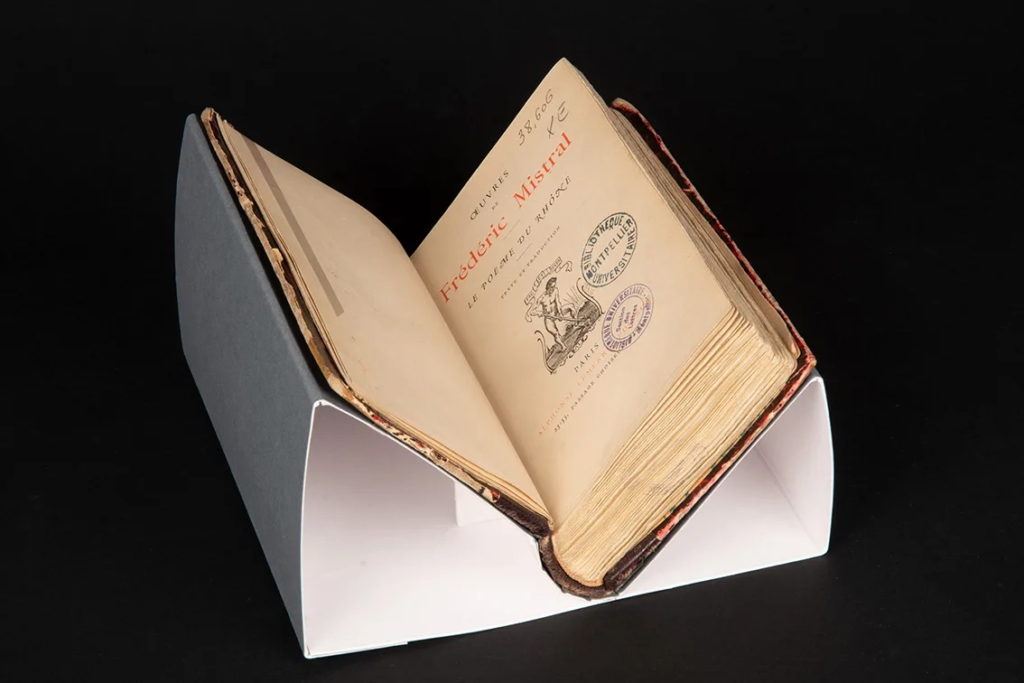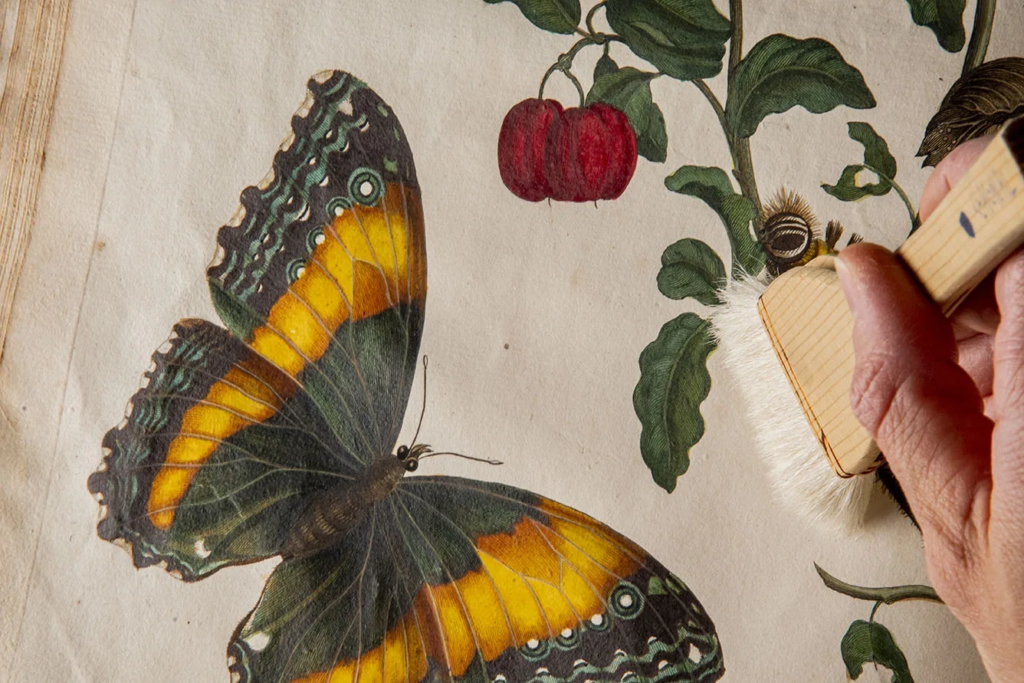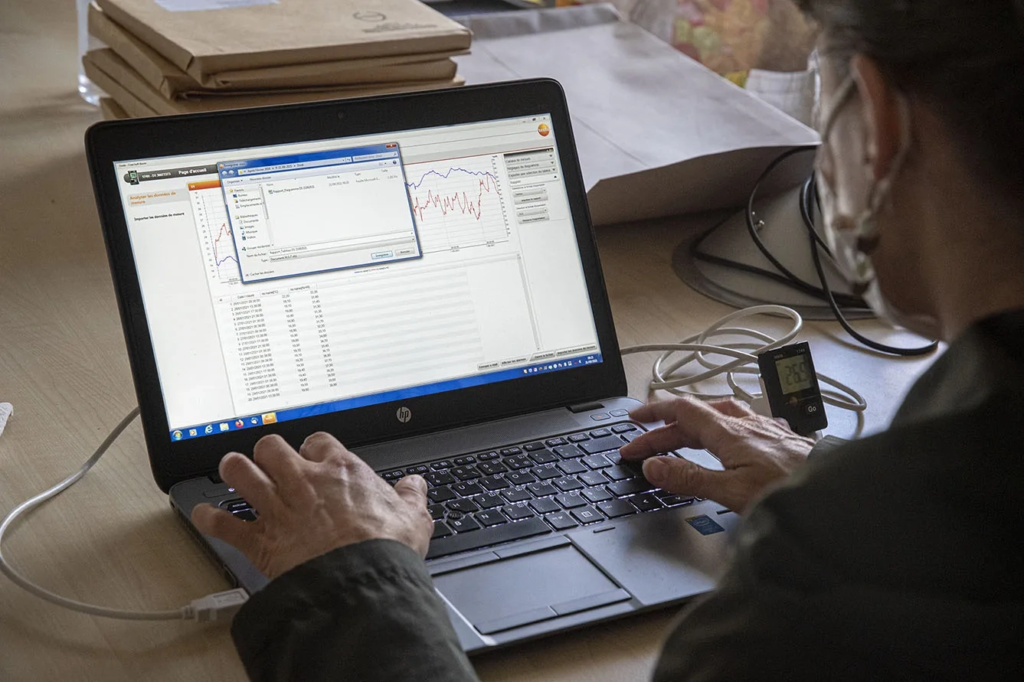Preventive conservation aims to identify all the risks, both environmental and human, which could jeopardise the collections. The conservator suggests ways to combat these threats and create the best possible conditions in the long term, through a range of indirect measures.
climate
Managing climatic conditions (temperature and relative humidity ) is a high-wire act. Depending on the temperature, paper, le leather and parchment can become warped and brittle as they absorb and release moisture from the air. Constant measurement and monitoring are key to maintaining a stable environment.
Light
Have you ever wondered why the atmosphere in heritage libraries is so muted, almost mysterious? Just like us, books and drawings tolerate light to different degrees. Light – whether natural or artificial – can irreversibly weaken and discolour these objects. To protect them, we keep them in boxes and limit the intensity and duration of light they are exposed to, both in storage and on display.
Pollution
Pollution can be particularly insidious. It creeps in everywhere and can destroy our heritage ! Dust, volatile organic compounds (VOCs) and gases, either from outside or released by furniture, can damage objects, corroding metal and weakening paper and leather.
Biological agents
Books and documents are among the favourite foods of rodents, insects and mould. Climate control, regular dusting and monitoring devices such as traps can limit infestations.
Best practice
Books are highly fragile artefacts! Consulting and displaying them come with a great deal of risk, requiring expert assistance in order to learn how best to handle them.






